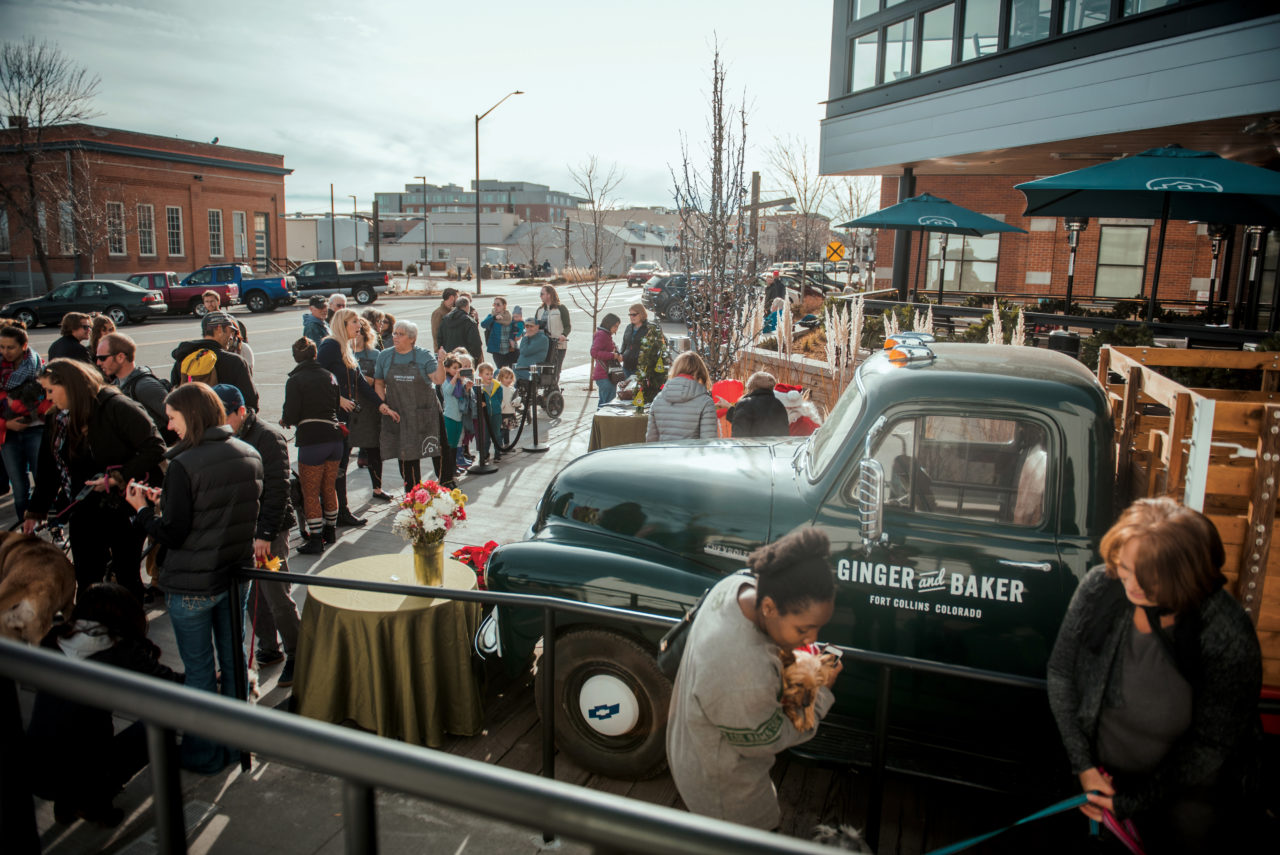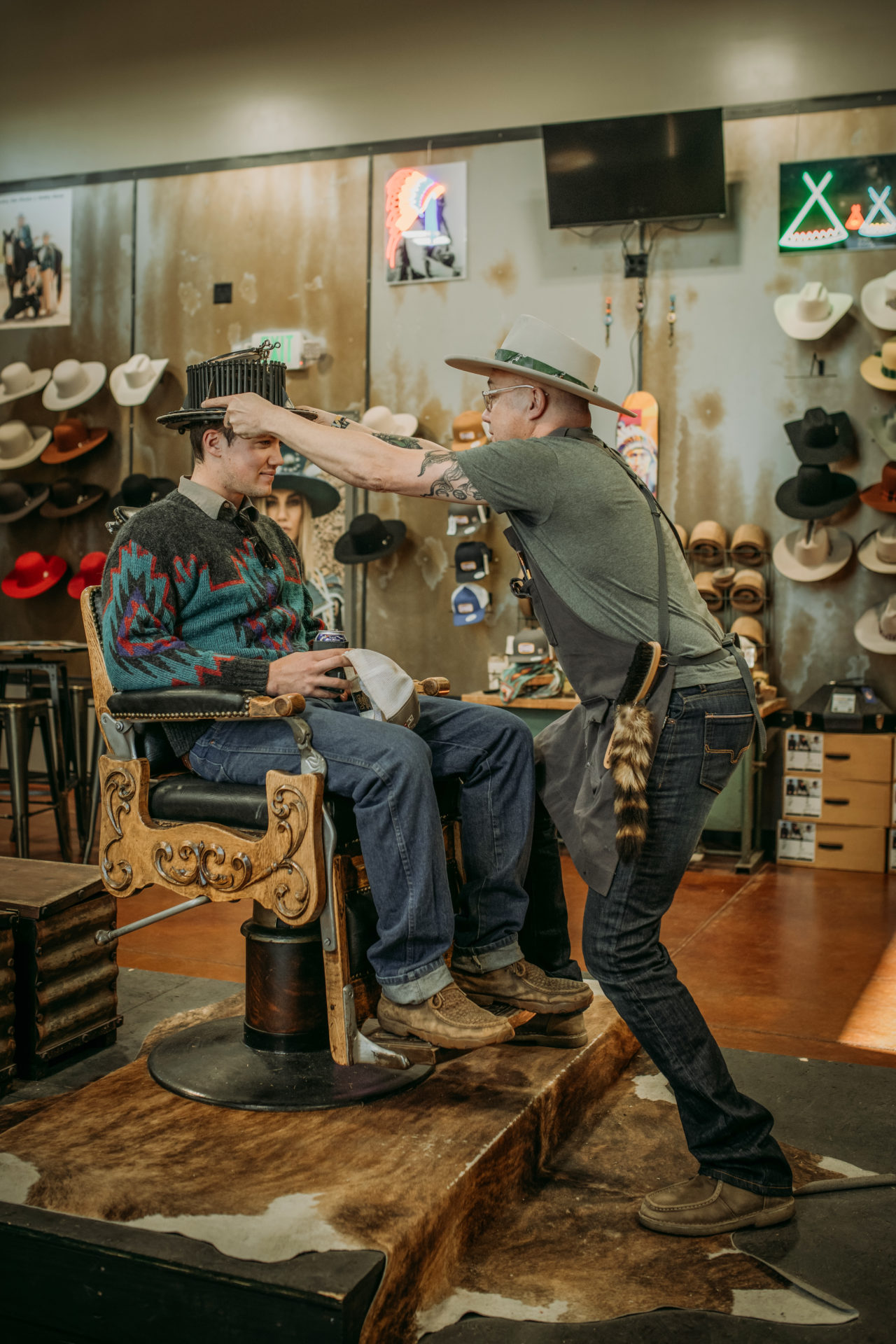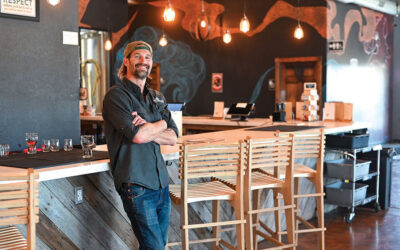Downtown Fort Collins is changing. That’s not big news because the city has been experiencing a lot of growth over the past decade or more, but the way it’s changing is noteworthy. The neighborhood at Jefferson and Linden Streets is an example.
Going to the Fort Collins Candy Store Emporium is like taking a trip back in time. Its walls are laden with shelves filled with jars of candy, and vintage cartoons and movies play on a loop on a TV monitor, while an old-time cash register periodically chimes in. Owner Tony Vallejos, who previously lived and worked in Fort Collins, remembered what the neighborhood used to be like and had to be convinced by his real estate broker to seriously consider the space at 227 Jefferson St.
While Vallejos is in the business of nostalgia, one thing he’s not nostalgic for is the way the neighborhood used to be. “Jefferson used to be kind of scary, especially at night,” he remembers. “I wasn’t interested in relocating my business [from Cheyenne] here. But once I took a look at the building and saw how this part of town has changed, I went ahead and signed the lease.”

Fort Collins Candy Store Emporium, at 227 Jefferson St., offers a bit of 1940s nostalgia and provides patrons of Union, across the street, a place to browse while waiting for their tables. Owner Tony Vallejos recently relocated his candy store from Cheyenne, Wyoming.
For many years, once night fell on the stretch of Jefferson Street between College and Mountain avenues, it wasn’t considered a friendly part of town. Businesses operated on a typical 9-to-5 schedule, with the exception of Rodizio Grill and a tattoo shop. Now, with the arrival of the candy store, Union Bar & Soda Fountain and a host of new businesses opening on Linden, the area is seeing renewed energy.
Union restaurateur Ty Fulcher says his partner in Old Town Restaurant Group, Ryan Houdek, “always grabbed a spot on the outside of the epicenter, just before the epicenter started to move.” Houdek, who opened Rodizio Grill in 2008, jumped on the opportunity to purchase the building in which it’s housed, the historic 1902 railroad depot building at 200 Jefferson St. That bold move was a sign of times yet to come.
About three years ago, Fulcher and his partners were also presented with an opportunity to purchase the property at the northwest corner of Jefferson and Linden known as Jefferson Park. Originally owned by the Union Pacific Railroad, the park had become a gathering place for the homeless, mainly because it is directly across the street from Fort Collins Rescue Mission. The sale created a bit of a brouhaha, when it became apparent that the property would no longer be a hangout and campsite.
“Here’s what people don’t understand,” explains Fulcher. “The [property’s] deed, as set out by the railroad, required that the property could not continue to be a park. It was important to us—and still is—that we are good neighbors, especially with the Rescue Mission.”
Fulcher worked closely with the city and the Rescue Mission during the development phase of the restaurant and recognizes that area parks, such as in the Buckingham neighborhood, have absorbed the homeless population during the daytime hours.
Alexxa Gagner, director of marketing and communications for the Denver Rescue Mission, the parent company of the Fort Collins location, remarks on the neighborhood’s growth, “We view neighborhood change as a positive thing. The challenge is not leaving people behind.”
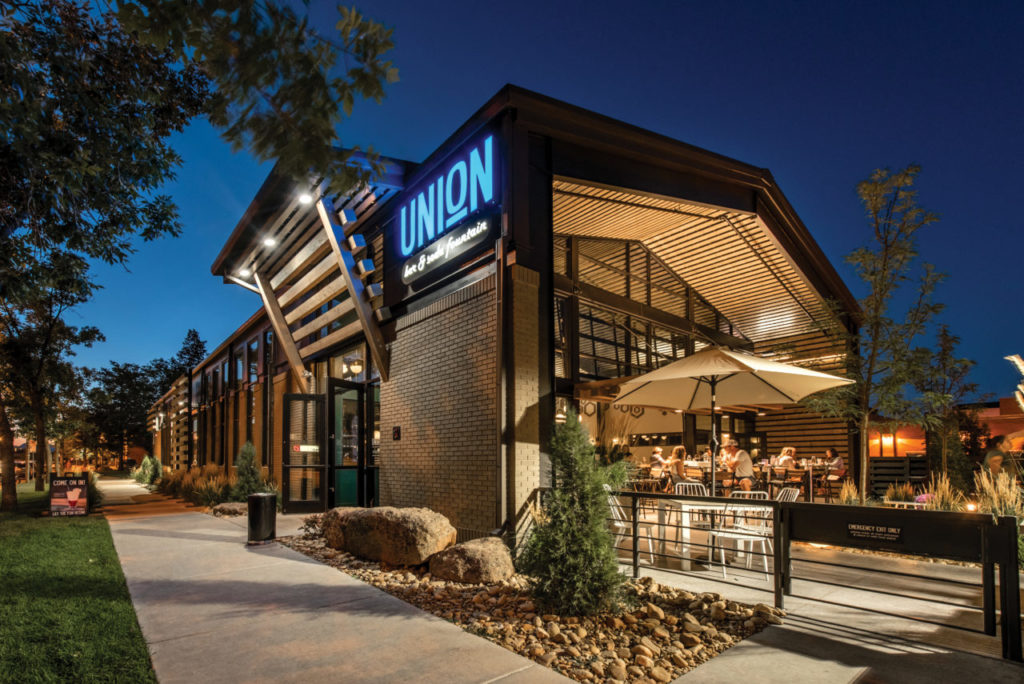
There was a time that the neighborhood at Linden and Jefferson streets wasn’t much of a destination at night, but all that has changed. Union Bar and Soda Fountain, which opened earlier this year in a newly constructed building, is a tribute to 1940s-era diners and also offers patio seating for al fresco dining. Events such as this fundraiser for Animal House in front of Ginger and Baker have become more frequent.
On a daily basis, not much has changed for the Mission’s guests. Foot traffic and activity have picked up as people cross the street to visit businesses to the east, such as Ginger and Baker, Mobb Mountain Distillers and Bas Bleu Theatre.
“With all the new construction and changes to the area, people ask us when we’re going to move,” says Gagner. “We’ve been here a long time—more than 20 years—and people who need our services would not have a place to stay or a place to get much-needed meals. City leaders share that sentiment, and if the Mission were to move, we would need a place to go.” She points out that homeless shelters are often met with resistance when looking for a location. At this point, there are no plans for the Mission to leave its current location.
Patrick Edmiston, founder of PHOCO, a photography studio and video production company, has seen a lot of changes in the neighborhood in the six years he’s worked there. His company was located in the Downtown Artery around the corner on Linden Street for several years before he established the Articulate, a co-working facility, at 324 Jefferson two years ago. “I think this is just the beginning,” he says of the area’s growth. “The city has a great opportunity that I hope they capitalize on. This part of town could become Fort Collins’ RiNo [Denver’s River North District]. We’re seeing more and more people cross the street, which just wasn’t happening before.”
Linden Street has seen its own renaissance over the past few years. The street didn’t see the same sort of foot traffic that was considered the norm for other parts of Downtown. The Downtown Artery and redevelopment of the Sunset Events Center into first Galvanize and now Spaces (another coworking facility), gave new life to the block between Walnut and Jefferson. The Reserve by Old Elk Distillery is one of the newest businesses to take root. “We saw the growth in this area happening and wanted to get here while it was still happening,” says Ben Smoot, tasting room manager. “We call it the highway between Old Town Square and the breweries. We really believe the breweries will eventually become a part of downtown and we’ll be more centrally located instead of on the outskirts.”
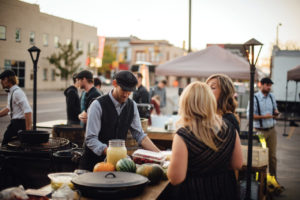
The Articulate is a creative coworking space and studio at 324 Jefferson St. Operators recently organized the Articulate Art Affair to promote local arts and artists.
The city is actively involved in the revitalization of the area. Design plans for Jefferson Street are about 60 percent completed, though no funds have been allocated toward construction. Design concepts include a raised, landscaped median from College Avenue to just past the Mountain Avenue intersection. The curb and gutter spaces will remain as they are now, but there will be beautification along the sidewalks.
Currently, Willow Street (between College and Linden) is the primary focus for roadway, sidewalk and parking improvements. The project is similar to what was completed on Linden Street in the River District. Linden between Jefferson and Walnut is on the drawing board, too, and has designated project funding. The design phase will start in 2019.
“It’s really cool to see all these changes happening and all the people coming to this part of Downtown,” says Ben Smoot, of The Reserve. “We’re liking it. We’re liking it a lot.”
Gentrification is typically described as “reinvesting resources for greater returns,” says George Washington University assistant professor of sociology Antwan Jones in a 2012 Washington Examiner article. Simply put, it’s when new and more affluent residents move into a previously underdeveloped neighborhood, renovating homes and shifting the demographics and property values. Oftentimes, this has a detrimental outcome for longtime, often minority residents, who see their neighborhood becoming financially out of reach. Revitalization efforts, on the other hand, look at the community as a whole in its approach to rebalancing the economic and demographic profile. Instead of the area being inundated with new homeowners, more businesses—often locally owned—make an investment in the neighborhood, with the purpose to maintain its character in increase diversity.

